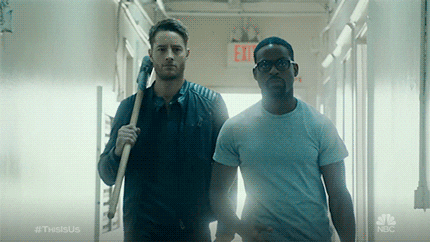Grab a Chair, Here Comes a Rant
A couple months back, I was on a Zoom call with a SaaS founder who runs a business management app. He wanted their brand to stand out from the competition… “not better, but a brand people will remember.” (that’s what he said verbatim)
So, I asked… “Who’s your immediate competition?”
Then he gave me a long quiet screen stare down. I was like… “Come ‘on dude, really?” 😐

In short, they had never bothered to see what everyone else is doing. I smiled and told him my past self have done the same. I joked about how it’s easier to binge a whole Netflix series than to scroll through a competitor’s website.
Eventually , he was able to came up with names such as Monday.com, ClickUp and BambooHR. With these competition he mentioned, it made it easier for me to guide him how to differentiate.
Oops, We Look-alike.
I’ve met many founders who build brands in a bubble. They spend months choosing colors and crafting taglines. Some even developed an emotional connection to the logo they created and can’t let go of it.
Then they launch, only to discover three other companies are using the same words.
Shocker 😱, I know.

If you don’t know who else is serving your audience, you risk blending into the crowd. Your services end up sounding like a copy‑paste job, and nobody notices you.
The “Secret Ingredient” to the “Secret Noodle Soup”
Here it is… there is no secret. A good competitive analysis is just a fancy way of saying “Do your homework.”

So that’s what we did, my client and I started by looking at other SaaS brands serving the same niche. We checked their visuals and messaging. Most of them use the same blue color palette and promised to make big change in how we manage our teams using AI.
We couldn’t stop saying “here’s another one!” because they all say the same thing. So my client picked a different color and a clear promise without saying the word AI. 3 weeks later, their brand actually stood out, and we didn’t even need a crystal ball.
Instead of highlighting AI features and capabilities, we focused more on results. AI is part of the system, and that should be a standard these days, not a differentiator.
Now Roll Up Your Sleeves
Want to try this yourself? Grab a coffee ☕ or whatever drink you want and follow these steps:

1. Know who you serve. List the companies already reaching your people. A simple table helps you spot strengths and gaps.
2. Sort your competitors. Put them in three buckets:
- Primary: They offer almost the same thing to the same audience.
- Secondary: They sell a higher or lower version or go after a different audience.
- Tertiary: They’re kind of related and could steal your customers’ attention.
3. Judge their looks. Check their logos, colors, fonts, and photos. Are they stuck in the past? Do they copy each other? Consistency matters.
4. Read their words. Scan taglines, bios, and social media. Ask if they make sense or if they’re just buzzword bingo. This is where you might laugh… or cry.
5. Check their online vibe. Visit their websites and social pages. Are they fast? Do they ask you to do anything? Are their followers actual humans or bots? Look at search rankings and ads.
6. See what others say. Read reviews to find out what customers love or hate. It’s like overhearing gossip but productive.
7. If you have the funds. Buy their services; this lets you experience their brand from a customer’s perspective.
8. Spot the gaps. After all this stalking, note where each competitor shines and where they flop. Compare it to your own brand. Now you know exactly where you can be different.
Story Time: This Is Where You Get A Popcorn.
1. We built a spreadsheet of five direct competitors. Their logos and colors were almost identical. Hint: avoid their shade of blue.
2. We copied their taglines. “Streamline your business with AI” appeared so often that it lost all meaning. My client picked a promise that actually meant something.
3. None of their websites had case studies. We added real results to my client’s site. Guess who got more inquiries? (you know the answer to this)
 It’s the same reason I enjoyed working with brands like TripSpark. They didn’t want to be another travel app fighting over bookings; they built something different. A place where people can save the spots they discover online and organize them by location and vibe for future trips. It’s simple, original, and actually solves a real problem: travelers forget where they found their inspiration. TripSpark makes sure they don’t.
It’s the same reason I enjoyed working with brands like TripSpark. They didn’t want to be another travel app fighting over bookings; they built something different. A place where people can save the spots they discover online and organize them by location and vibe for future trips. It’s simple, original, and actually solves a real problem: travelers forget where they found their inspiration. TripSpark makes sure they don’t.
If you want to see how it works, check out TripSpark and start saving your next adventure before you even plan it.
Your Move: Don’t Overthink It
Put down the remote and pick three competitors. Make a simple list of their visuals, messaging, and online presence. Write down one thing they do well and one thing they miss. Ask yourself how you can be the missing piece.
If you still feel like you’re too busy to do this on your own…
you can join my waitlist here👈. I’m all ears.
And They Lived Happily Ever After
Knowing your competitors isn’t about copying them. It’s about seeing the sameness and choosing to be the fun one at the party. My client realized every other SaaS productivity app looked and sounded the same. By making a few intentional changes, they actually stood out and attracted the right clients. You can do it too. Peek at your market, take notes, and use that insight to shape a brand that doesn’t put people to sleep.
That’s it for now ladies and gents, I’ll see you on the next one.

PS: Bonus tip… customer reviews are a goldmine. They reveal what people care about most. Use that information to tweak your offers. And if you stumble on a hilarious review, share it. We could all use a laugh.

I help early-stage startup founders build brands that actually get traction. No fluff, just clear strategy and design that speaks to the right people.Want to find out if your brand is ready? 👉Take the quiz or Join the waitlist